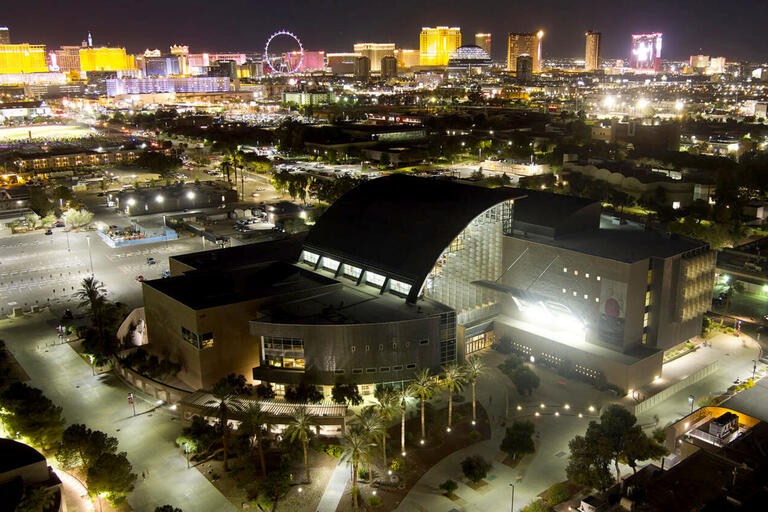Thousands of motorists see them daily as they pass on Flamingo Road near Cambridge Street. But what just what is done with those huge solar panels throughout any given year?
The solar power generation systems are run by UNLV's Center for Energy Research. Opened in 2001, the "solar site" as it commonly called on campus, originally was funded by the U.S. Department of Energy grant. The goal was to help students learn the theory behind solar energy systems and how to maximize the efficiency of photovoltaic panels. The center has helped companies with new solar technologies collect and analyze valuable data and to develop enhancements to their systems. Students, meanwhile, are able to interact with potential future employers.
But the systems aren't just for theory. They produce up to 100 kilowatts of energy, enough to power 20 homes when in operation, according to Robert Boehm, an engineering professor and the center's director. The power generated on the site is given back to NV Energy in return for energy credits for the university.
The site originally had two systems, one marketed by Stirling Energy Systems (SES) and another by the SAIC (Science Applications International Corporation). The SAIC system used "stretched membrane" facets while the SES system used a "fixed-focus" system.
Numerous modifications to both systems ensued within a year or two as the technology has developed. The center has tinkered with different shapes of panels and cooling mechanisms. For example, the center's evaluation helped one company achieve roughly 30 percent efficiency in its system, far above the industry standard of 10 to 18 percent, said Boehm.
Funding for maintenance and operation of the site comes from federal grants and private sector funds.
About the Solar Site
- Creator: UNLV's Center for Energy Research with various private partnerships
- Year Installed: 2001
- Dimensions: Two solar arrays, one is 55 feet by 55 feet wide, the other is 55 feet by 70 feet wide. The structures have changed in size and shape through the years, depending on the technology being tested.
- Reason for installation: The goal of the site is to train students in the theory and operation of solar dish systems while improving the reliability, design and function of evolving solar technologies.



